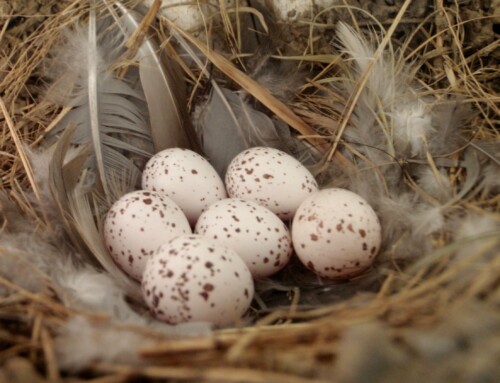Does wing pattern predict longevity?
LINKED PAPER
A small badge of longevity: opposing survival selection on the size of white and black wing markings. Sepp, T., Rattiste, K., Saks, L.,; Meitern, R., Urvik, J., Kaasik, A. & Hõrak, P. 2017. Journal of Avian Biology. DOI: 10.1111/jav.01136. VIEW
The appreciation of beauty is highly evolved among birds. The incredible variety of bird plumage coloration is mainly the result of birds choosing the prettiest among them for mating partners. A pretty bird is a bird with good health, so by picking a beautiful mate, a bird also gets good genes for its offspring. So, pretty feathers show health. But do they also predict the longevity of birds?
This question is especially important for long lived monogamous species, who choose a partner for life and take care of their young together. Can they count on a long row of happy anniversaries by choosing a mate with pretty feathers? To answer this question, we studied if the black and white wing pattern of long lived monogamous seabirds, Common Gulls Larus canus, predicts the future lifespan of the birds. We used a breeding colony of gulls on Kakrarahu islet, Estonia, where gulls have been studied for more than 50 years.


We found that birds who lived longer (better quality birds) had more white and less black on their wings. White colour on wings is costly, since the dark pigment melanin protects the feathers from wear and tear. If a bird has more white, it means it has the ability to withstand or avoid the wear and tear. More white is therefore an honest signal of quality (“beauty”).
The wing pattern was mostly consistent throughout the bird’s life, which is amazing, since, as we know, birds change their feathers every year. However, as the birds get older and their health decreases, they start to have more black and less white on their wings. This was true for both males and females. This indicates that if both parents are choosy about their partner and both invest in offspring care (as humans do!), then the traits that are viewed as beauty evolve in both sexes.
Like in human societies, gull breeding colonies are full of complicated relationships and intrigues. Although Common Gulls are usually monogamous birds, there are some who don’t follow the rules. A male gull nicknamed Endel was one of the few birds in our colony who kept two wives. The wives were the same from year to year, and the family stayed together from 1996 to 1999. Sometimes they had two nests next to each other, sometimes they laid their eggs in the same nest. The wives would argue with each other all the time and the family’s breeding success was not great. One of the females usually started egg-laying a few days earlier than the other and when the first eggs hatched, both of the wives felt the urge to start taking care of the chicks and nobody bothered with finishing hatching. So the eggs only few days from hatching were left without care.
Endel lived a long life and died in July 2014 at the age of 31 in Denmark. Based on his story, it seems that polygamy may be good for your health and longevity, but might not give any more offspring than having monogamous relationships, because of all the drama inside the family.
We can view the gulls as a model system for understanding the evolution of beauty in all other long lived monogamous species. This is something that interests evolutionary biologists even more than specific knowledge about one species. At the same time, a better understanding of gull behaviour and its similarities to human behaviour helps us to appreciate these birds more. Therefore, these kinds of studies, and especially science outreach based on these studies, helps to protect species that are sometimes viewed as a nuisance by humans, as gulls sometimes seem to be.
References and further reading
Sepp, T., Rattiste, K., Saks, L.,; Meitern, R., Urvik, J., Kaasik, A. & Hõrak, P. 2017. A small badge of longevity: opposing survival selection on the size of white and black wing markings. Journal of Avian Biology 48: 570-580. VIEW
Image credit
Featured image: Common Gull, Larus canus | Janne Aaltonen | CC BY-NC-ND 2.0
If you want to write about your research in #theBOUblog, then please see here.





